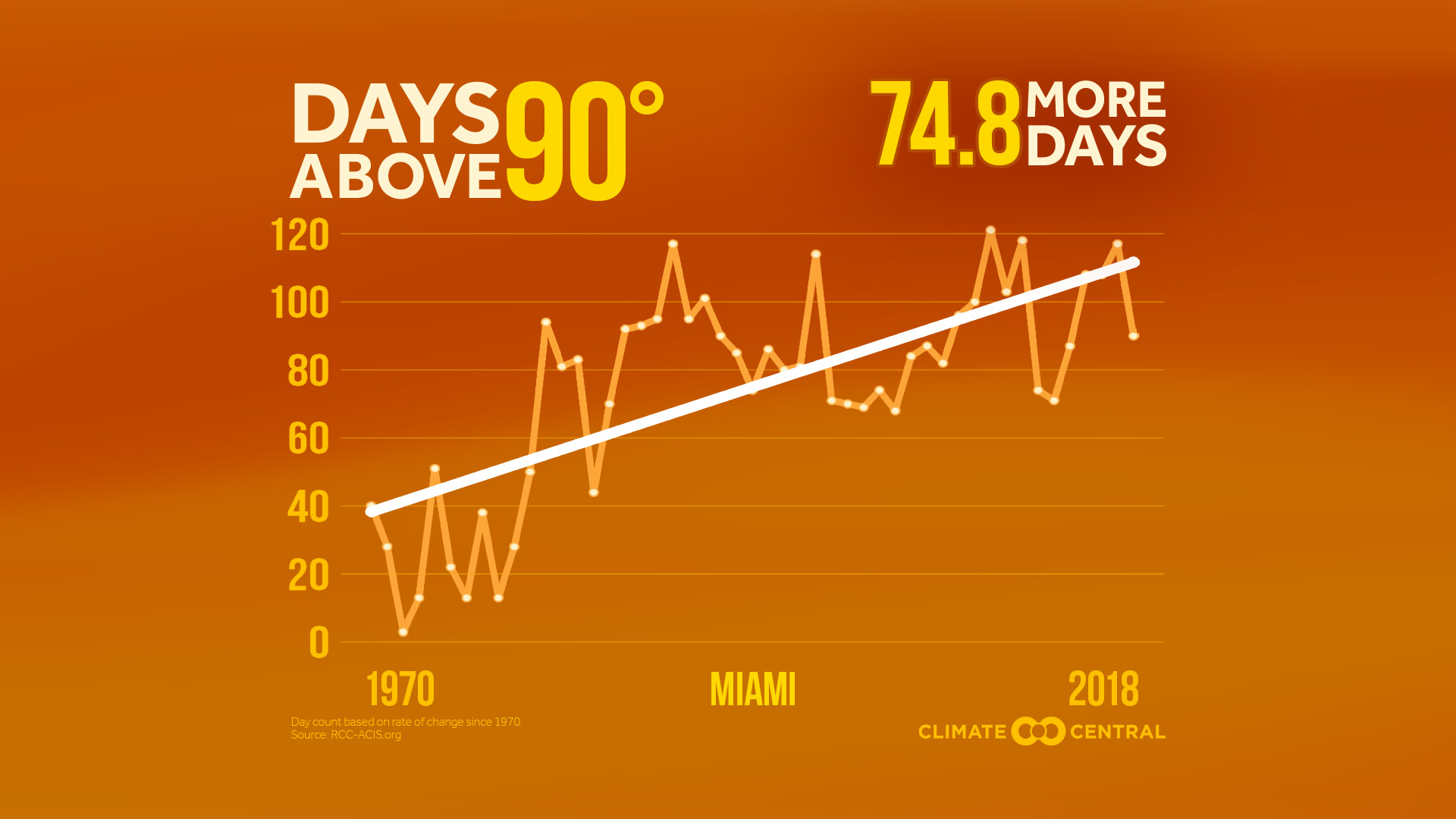Across the world, it’s been another summer of blistering heat. France endured record-shattering temperatures up to 45.9oC (114.6oF), while parts of India and Pakistan approached 50oC (122oF). And in the U.S., heat waves have broiled the West, Midwest and East. Intense heat is getting worse with climate change, as even small increases in average temperature can greatly magnify extremes. This week, we explore how the annual totals of extremely hot days have changed in your local area.
Of the 244 cities analyzed, 75% have recorded an increase in extremely hot days since 1970. Though the definition of “extremely hot” varies from 70oF in Anchorage to 110oF in the Desert Southwest, these local thresholds are being crossed more often from Alaska to Arizona. The largest change by far has come in Miami, which now sees 75 more days above 90oF (on average) than it did in 1970. But 7 of the top 10 changes have occurred in Texas—all showing more than a month of additional extremely hot days. These findings match our analysis on summer temperature trends: southern summers are heating up fast!
Heat extremes have serious health consequences. According to the Centers for Disease Control and Prevention, extreme heat is the deadliest of all weather-related hazards. Reducing the human-caused emissions that warm our climate would limit these deaths, as the Fourth National Climate Assessment makes clear. If emissions continue unchecked, 49 large U.S. cities could see more than 9,000 additional premature deaths per year by the end of this century. But if the world makes significant emissions cuts— roughly in line with the Paris Agreement pledges—more than half of those deaths could be avoided.
Mortalities are just one of many heat impacts. Another is labor productivity: with unchecked emissions, the additional heat could cost $160 billion in lost wages by 2090. But as with deaths, significant emissions cuts could slice the costs nearly in half.
METHODOLOGY: Data was gathered via the Applied Climate Information System. An “extremely hot day” is defined as the highest 5°F increment temperature that occurred for at least three days in more than half of the years of the study period (since 1970). Change in the number of days is based on linear regression.
Climate Central's local analyses include 244 stations. However, for data summaries based on linear trends, only 242 stations are included due to large data gaps in St. Johnsbury, Vermont and Wheeling, West Virginia.
